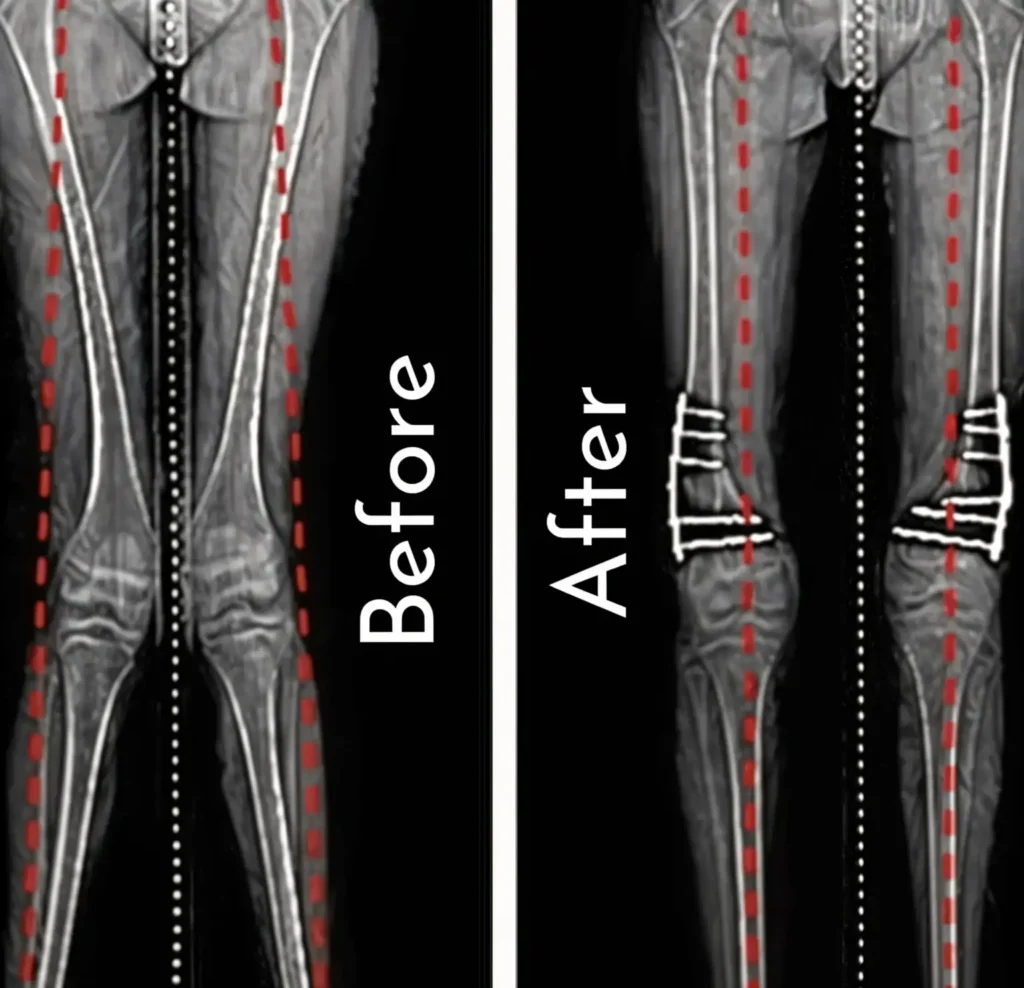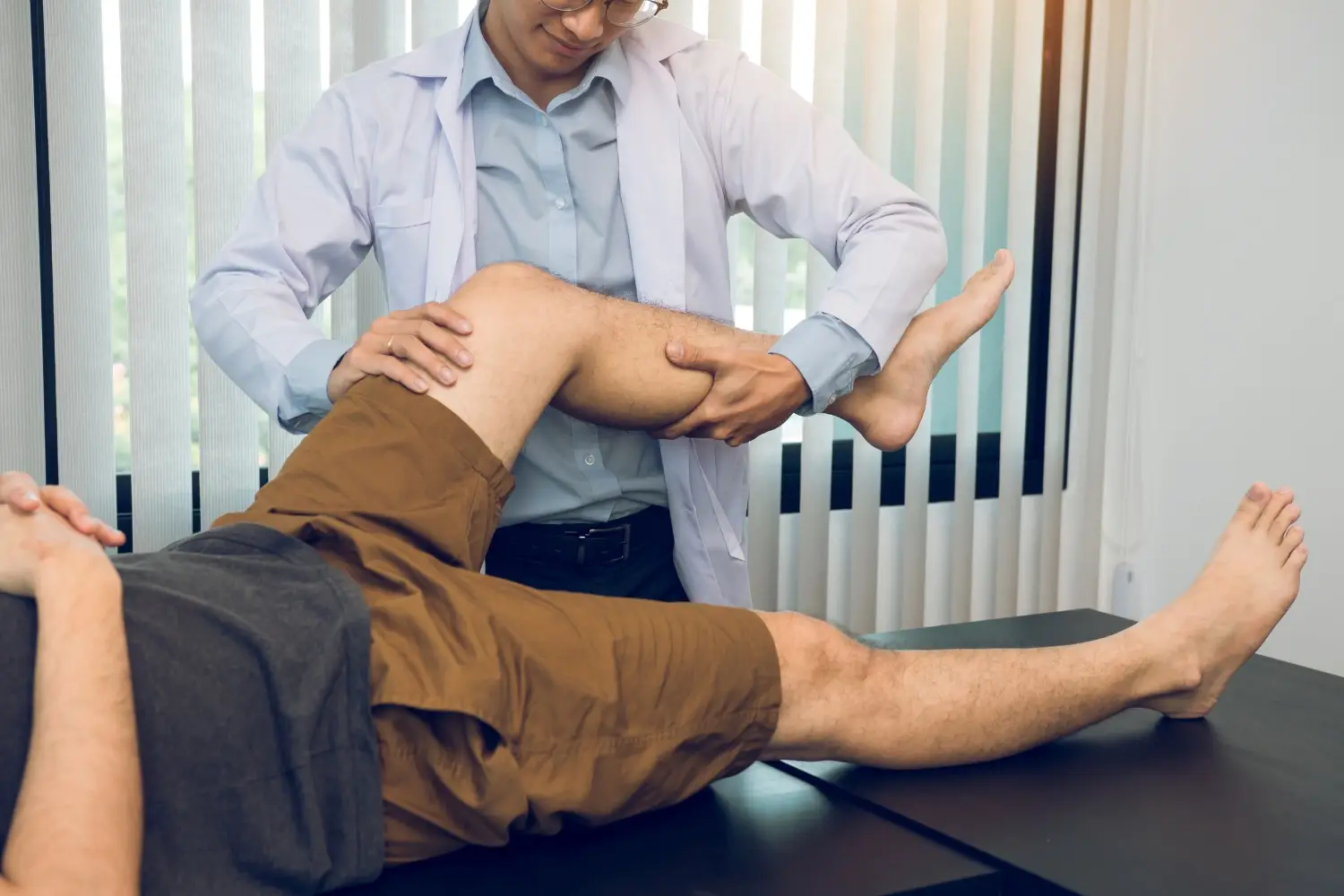Deformity corrections in Chennai are a vital medical service for individuals dealing with musculoskeletal irregularities that affect their daily comfort, mobility, and confidence. Whether caused by birth defects, trauma, or post-surgical complications, these deformities can have a serious impact on one’s ability to live actively and pain-free. At the forefront of this highly specialized field is Dr. Omer Sheriff, a renowned orthopedic and knee surgeon based in Kolathur, Chennai. His approach combines deep clinical expertise with a compassionate understanding of every patient’s needs. With the right treatment, individuals can reclaim their posture, restore function, and significantly improve their quality of life. Deformity Corrections in Chennai not only enhance movement but also prevent long-term complications.
Understanding Deformity Corrections
Deformity correction is a subspecialty in orthopedic surgery focused on restoring the normal alignment and function of bones and joints. Deformities can arise when bones grow abnormally, heal incorrectly after fractures, or when genetic or neurological conditions disrupt natural skeletal development. In children, such issues often surface during growth spurts, while in adults, they can occur after injury or surgery.
Orthopedic deformities may affect the upper or lower limbs, the spine, or joints like knees and hips. Misaligned bones not only cause visible structural abnormalities but also interfere with proper joint motion and muscle balance. As a result, the surrounding tissues—ligaments, tendons, and muscles—may experience extra strain, leading to pain, inflammation, and long-term joint damage.
Dr. Omer Sheriff, practicing in Kolathur, ensures that each deformity is precisely diagnosed using advanced imaging techniques and functional assessments. His individualized treatment plans aim to correct misalignments while minimizing disruption to the patient’s lifestyle. His expertise in Deformity Corrections in Chennai has earned him recognition for achieving excellent outcomes even in complex cases.

What Are the Symptoms?
Recognizing early signs of bone or spinal deformity is crucial for timely medical intervention. The following symptoms are commonly associated with structural irregularities and may necessitate professional evaluation:
- Persistent Joint or Back Pain: Continuous discomfort in knees, hips, or lower back that worsens with activity could indicate underlying misalignment.
- Visible Misalignment or Uneven Shoulders: An obvious difference in shoulder height, limb angle, or hip position may suggest skeletal imbalance requiring spinal deformity correction in Kolathur.
- Difficulty Walking or Using Limbs: Patients may experience a limping gait, reduced stride length, or inability to bear weight on a specific leg or arm.
- Stiffness or Reduced Flexibility: Joint deformities often limit range of motion, making everyday activities like climbing stairs, squatting, or bending difficult.
- Frequent Fatigue or Imbalance: Deformities may cause inefficient movement patterns, leading to muscular overuse, poor coordination, and overall tiredness.
Ignoring these signs can lead to worsening of the condition and even permanent disability. That’s why it’s important to consult an orthopedic specialist like Dr. Omer Sheriff early.
Why Deformity Corrections Are Important
Deformities that go untreated can gradually lead to multiple complications beyond pain or limited movement. Over time, the irregular distribution of mechanical forces on joints and bones accelerates wear and tear, contributing to early-onset arthritis, chronic inflammation, and degeneration of cartilage.
Misalignments in the spine may also affect the function of internal organs, posture, and breathing. Psychological stress, especially in children and teenagers, may arise due to visible differences and limited participation in physical or social activities.
By seeking timely care from a trained expert like Dr. Omer Sheriff, patients benefit from:
- Early diagnosis and intervention that prevent permanent joint damage.
- Restoration of symmetrical movement and posture.
- Reduction in compensatory issues such as muscle pain or joint degeneration.
- Improved confidence and ability to return to school, work, or sports.
- Enhanced long-term orthopedic health and independence.
Deformity Corrections in Chennai play a crucial role in restoring both function and confidence, making timely consultation essential.
Common Types of Orthopedic Deformities
At Dr. Omer Sheriff’s practice, patients present with a wide range of musculoskeletal deformities. The most common include:
- Knock Knees (Genu Valgum) or Bow Legs (Genu Varum): These conditions cause knees to angle inwards or outwards excessively, often visible in children but sometimes persisting into adulthood if left untreated.
- Scoliosis or Kyphosis: These spinal deformities result in abnormal curvature of the spine. Scoliosis causes sideways bending, while kyphosis involves a rounded upper back. Both conditions fall under spinal deformity correction in Kolathur.
- Limb Length Discrepancies: Even a few centimeters difference between leg lengths can lead to walking difficulties, hip strain, and back pain over time.
- Post-Traumatic Bone Misalignment: Poorly healed fractures can cause bones to set in the wrong position, affecting limb alignment and joint function. Such patients often benefit from bone deformity correction surgery in Kolathur.
- Congenital Clubfoot or Joint Contractures: These deformities are present at birth and may impact walking or movement if not corrected early.
Each of these conditions requires a tailored approach to achieve successful long-term results, which is exactly what Dr. Omer provides through his evidence-based techniques.
Treatment Options
Dr. Omer Sheriff specializes in advanced orthopedic procedures that are precisely suited to the nature and severity of each deformity. Some of the most effective treatment options include:
- Osteotomy
An osteotomy involves surgically cutting and repositioning a misaligned bone to correct deformity. This procedure is commonly performed for knee deformities, such as bow legs or knock knees, and helps redistribute weight-bearing forces across the joint more evenly. Patients undergoing deformity correction surgery in Kolathur often experience significant pain relief and functional improvement following osteotomy.
- Spinopelvic Fixation
This complex spinal procedure stabilizes the connection between the lumbar spine and pelvis using rods, screws, and fusion techniques. It’s particularly effective for patients suffering from severe scoliosis, kyphosis, or spinal instability. With Dr. Omer’s skill and precision, spinal deformity correction in Kolathur ensures minimal risk and excellent alignment outcomes.
- Pedicle Subtraction Osteotomy
A highly specialized surgical method used to treat fixed spinal deformities, especially those causing sagittal imbalance. The technique removes a wedge-shaped portion of a vertebra to allow the spine to be realigned. Though technically demanding, it delivers life-changing results for patients with significant postural dysfunction.
- Acute vs. Gradual Correction
Acute Correction: The bone is realigned and internally fixed in a single procedure. This method is best suited for deformities where immediate structural correction is safe and effective.
Gradual Correction: Similar to orthodontic braces, this method involves slow adjustment over weeks using external fixators. It’s ideal for complex cases or pediatric patients, where progressive change helps tissues adapt and heal naturally.
Benefits of Deformity Corrections
The advantages of undergoing timely and expertly managed deformity correction are profound:
- Improved Mobility and Daily Comfort: Patients regain the ability to walk, run, lift, or move with ease—often pain-free.
- Balanced Body Posture: Correct alignment helps maintain musculoskeletal balance, reducing the risk of compensatory strain in other joints.
- Reduced Pain and Inflammation: By eliminating abnormal pressure points and improving biomechanics, chronic discomfort is significantly minimized.
- Better Physical Appearance and Confidence: Straightened limbs and improved posture can positively influence self-esteem, especially in younger patients.
- Prevents Long-Term Complications: Early correction avoids the development of secondary joint damage, spine disorders, and degenerative arthritis.
Dr. Omer’s experience in Deformity Corrections in Chennai ensures that every patient benefits not only from surgical expertise but also from post-operative rehabilitation, which is key to lasting success.
Conclusion
Deformity Corrections in Chennai, particularly at the hands of a skilled specialist like Dr. Omer Sheriff, offer patients a renewed chance at pain-free movement, confidence, and independence. Whether you’re dealing with a visible limb abnormality or a complex spinal misalignment, expert care is crucial to ensure the best outcome.
Dr. Omer combines precise diagnostics, innovative surgical techniques, and compassionate care to deliver transformative results from his clinic in Kolathur. With a strong track record in bone deformity correction surgery in Kolathur and spinal deformity correction in Kolathur, he remains one of the region’s most trusted names for orthopedic excellence.
Read also: Paediatric Fracture Treatment


